
.jpg)
You must have heard of the Orangerie Museum's importance as a centre for Impressionist art collection, boasting one of the finest collections in Europe, particularly for its display of the huge monumental WATER LILIES by Claude Monet. It is situated in the Tuileries Parc, and you can find it, a 5-minute walk from Concorde station. There are 146 works on permanent exhibition, and temporary exhibitions on themes are organised in collaboration with other museums and collectors. So visit the Orangerie Museum at different times of the year and enjoy special exhibitions.
Once you enter the museum, you will be amazed by the bright inside of the building which is filled with sunlight as it comes through the huge window. On the ground floor, you can find Monet’s WATER LILIES, a café and a souvenir shop on the 1st basement floor, their current collection, and a temporary exhibition on the 2nd basement floor. The museum looks small in scale compared to other famous museums. But in addition to the famous Water Lilies cycle, eight large paintings by Claude Monet that cover the walls of two large oval rooms, the museum presents works by Alfred Sisley, Claude Monet, Paul Cézanne, Henri Matisse, Pablo Picasso, Paul Gauguin, and Kees van Dongen.
.jpg)
It narrates the flow of revolutionary art history from impressionism in the 19th century to 20th-century art inspired by the previous era. Below we will introduce to you 7 artworks you should not miss in the Orangerie Museum.
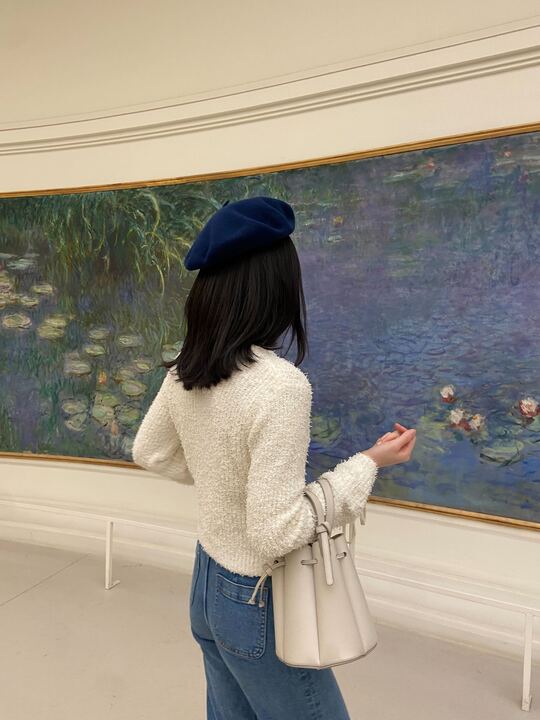
In this museum, a set of 8 panels of painting, donated after the First World War, is exhibited in 2 oval rooms. As each panel is 2 meters high and spans a total length of 91 meters, you can enjoy a panorama view of his pond of Giverny, the town where he lived and had a house. All 8 paintings represent the same water lily pond, but each panel has a different atmosphere. In his other series of paintings, such as CATHEDRAL DE ROUEN or LES MEULES, the artist focused on the landscape changing by various sunlight which depends on the seasons or the passing of the hours from sunrise to sunset.
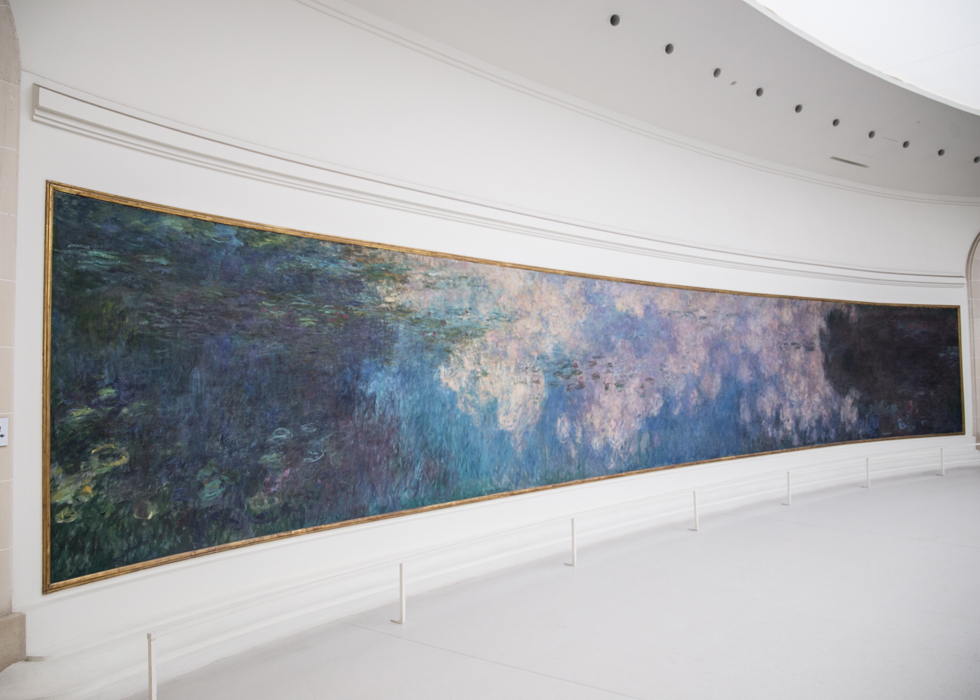
Monet painted these tableaux after World War One. If you know this fact, you may feel his emotion and pray for peace, especially in the dark shadow or the calm sky reflected on the water's surface. There is no perspective, but the elements such as waves of water, flowers, sky, or trees create a rhythm in these pictures. His every touch is left three-dimensional because he put the colors directly on the canvas, and then mixed them with other colors there. It gives us some impression of vibration or wind which brings a movement such as nature, social affairs, or someone whom he loves. And all these elements make an illusion that represents an infinity of nature, or his thinking.
This spiritual and monumental space is apart from the hustle and bustle of the city. These exhibition rooms could be considered one of the most beautiful places in Paris or the world.
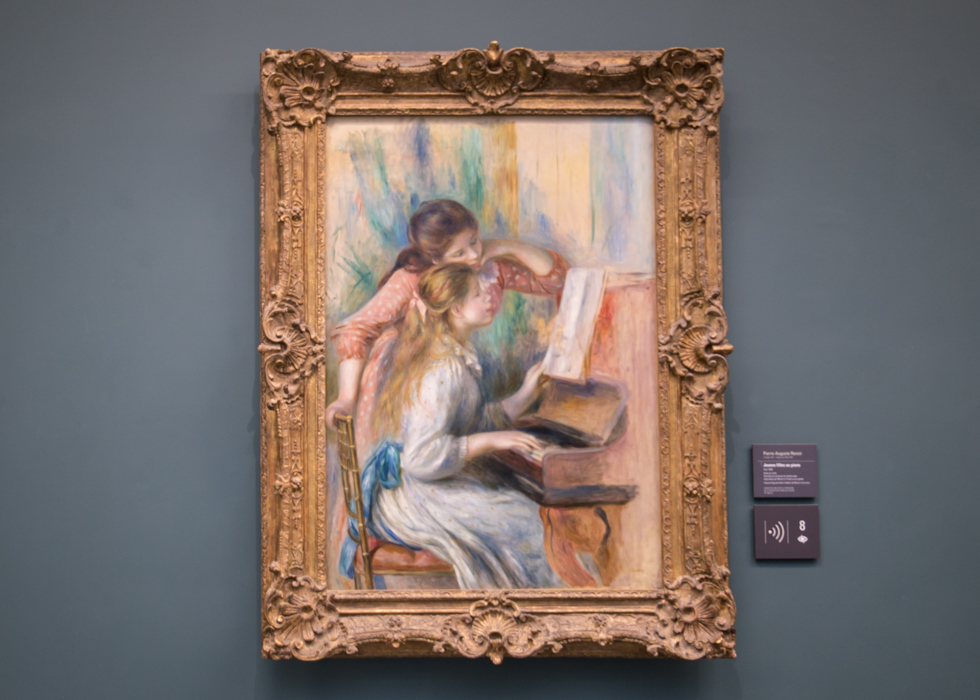
The photo above is Auguste Renoir’s JEUNE FILLES AU PIANO, painted in 1892. The singularity of his style, the expression of the figure, focused on women’s portrait is representative. The artist often painted women in white dresses, which was an important part as symbol of feminine beauty for him. This artwork with soft and delicate touches seduces you into the girls’ world with pure pleasure. You can enjoy their impressionist artworks and compare the style of Monet and Renoir.
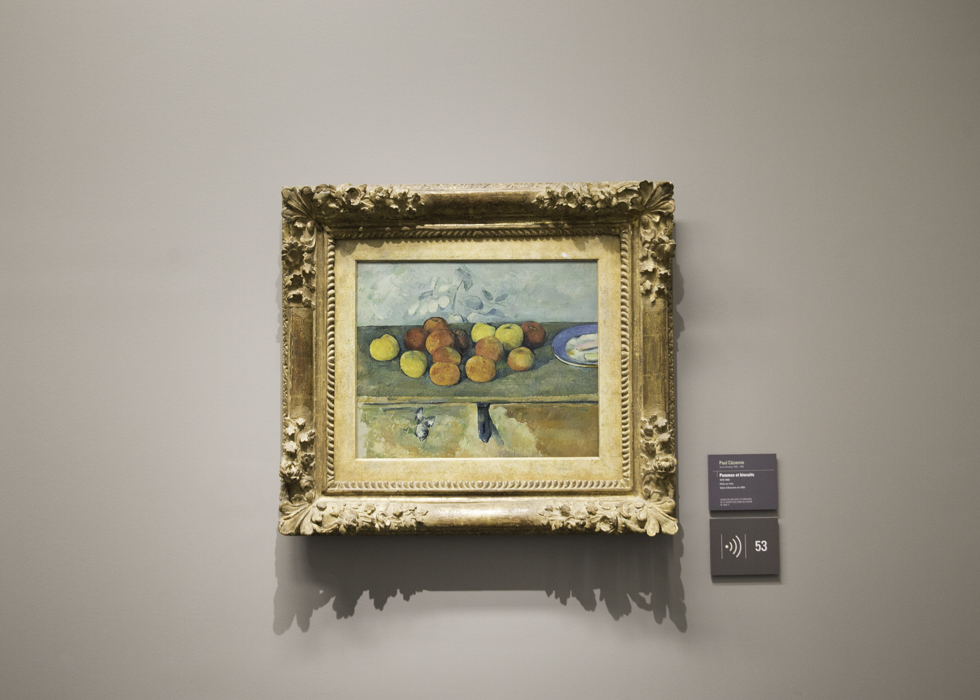
The artwork in the photo above is one of the famous paintings of Paul Cézanne, POMME ET BISCUITS painted between 1879 and 1880. He created his artwork as a mirror of his vision and his thoughts. In this picture, he draws apples more like peaches than real ones. What he focused on is the dynamism and potion of apples which are red and round.
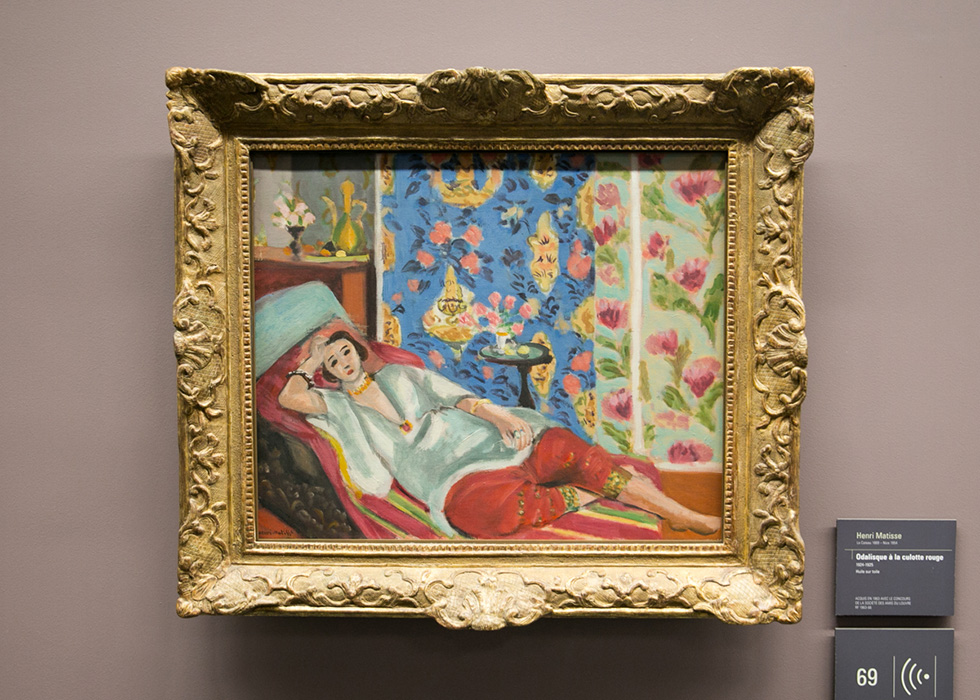
Henri Matisse is well-known for his fauvism art, named in 1905. He pursued the purity of human beings, such as pure desire, or deep and hidden aspects. In the previous century, Manet, the father of impressionism, made a huge scandal with his OLYMPIA exhibited in the Orsay Museum, and it became one of the most popular sources of inspiration for 20th-century artists. Matisse was one of those artists who got impressed by Manet's painting. And he also often used the subject of the woman Odalisque, as in this masterpiece.
Despite the traditional subject, you will realize some new trends in the period. Vivid colours and minimal expression on her face came from African and Oceanian art said ‘primitive’. The flatness of panels and patterned decorations issued to Japanese stamps. Also, her costume typically shows his oriental taste. This canvas narrates the change in 20th-century artists’ taste in a social movement. Compared to impressionist art, which represents the bourgeoisie hobby and is loved by high-class people, they focused on the culture without industrialization.
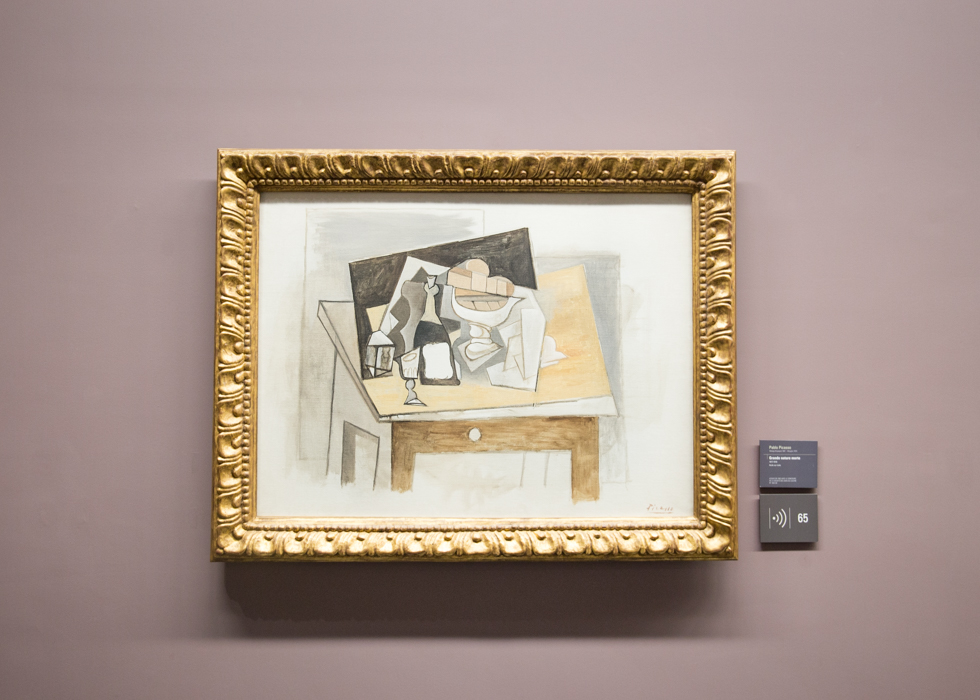
Picasso, a close friend of Matisse, is one of the most famous masters of the art. The artist is known as a cubist artist and his artwork in the photo above is typically cubist. As Cézanne did, Picasso observed objects in front of him, but what is different is after observation, he deconstructed them, and he finally reconstructed them. That’s the cubist way to create their artwork. This painting seems composed with many straight lines, and it shows us the trace of his way of creation, for example, the flat 2-dimensional table. He observed from all angles, and he painted these surfaces which are not supposed to be seen from only one point of view. His own approach to reality appears.
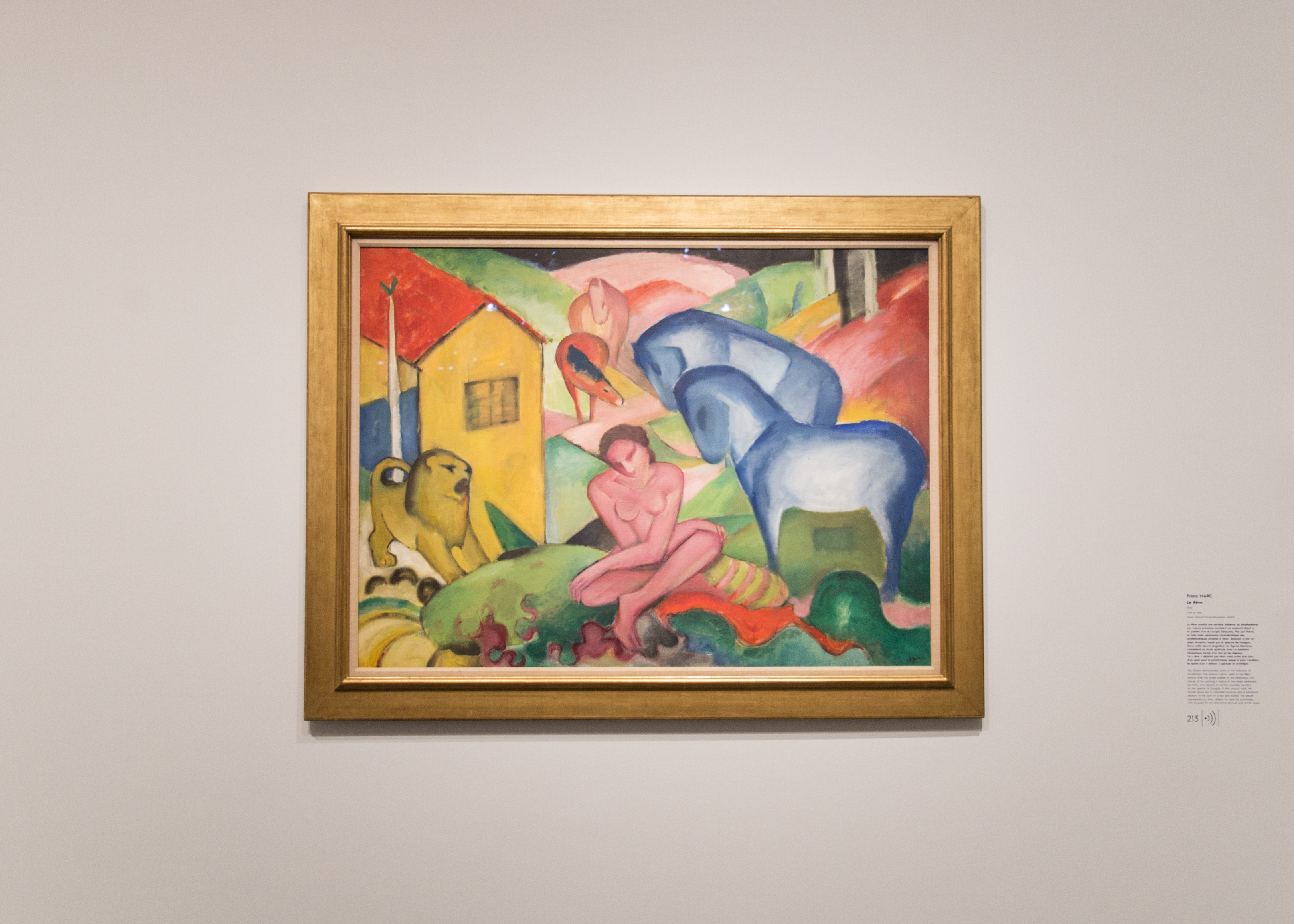
Le rêve was painted in 1912 in Sindelsdorf and given to Kandinsky, who in return gave Franz Marc his Improvisation 12. Cavalier. The composition is structured on large dynamic lines that start from the female figure in the center. Her cross-legged sitting position, with her arms so strangely crossed, is the point of intersection of the oblique lines forming a V-shaped structure. The woman is asleep and the elements around her seem to belong to her dream. One thinks here of Gauguin, of his vision of a primitive and paradisiacal nature, but also of the Douanier Rousseau, well known to Marc, who, in his own Dream, had brought together a naked woman, a luxuriant nature and animals.
.jpg)
Picasso's iconic painting Les Adolescents was inspired by a trip he took with his partner Fernande to Gosol. The earth in this Catalan Pyrenees village has a unique ochre color that Picasso was able to incorporate into his "pink period" from 1904 to 1906. This style was characterized by subdued pinks, blues, and greens, and explored themes of melancholy and poverty.
Les Adolescents, which portrays two young men in a contemplative pose, showcases this delicate coloration and sensitive subject portrayal. Interestingly, the painting also foreshadows Picasso's "return" period in the 1920s, which is reflected in other works such as The Orangerie's large bathers. During this time, Picasso moved away from his abstract experimentation and embraced a more classical style.
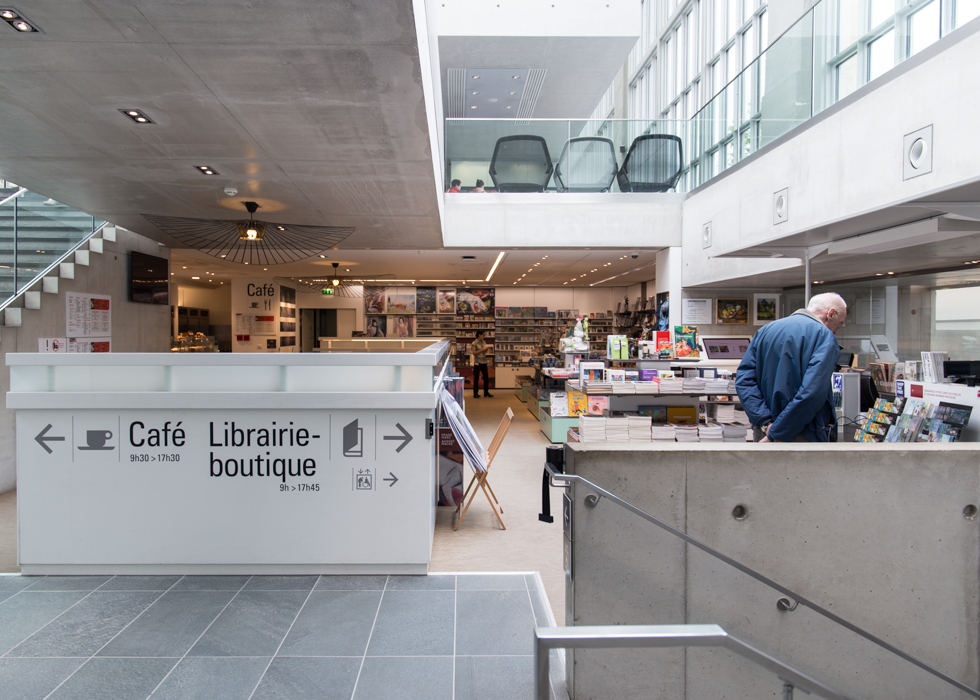
Besides their collection, Musée de l’Orangerie holds always fascinating temporary exhibitions which are attached to 19th-century art and impressionism. Their various exhibition will always give you inspiration about art which has one of the most glorious histories in art history.
When O’bon Paris visited, they hold an exhibition, FRANTZ MARC / AUGUST MACK. THE ADVENTURE OF THE BLUE RIDER, which is about expressionism, is one of the two leading groups of this artistic avant-garde movement in Germany in the 20th century. Their revolutionary art with objectives to subvert the social structure is strongly related to the innovative history of impressionism which is loved by bourgeois people in France. Their paintings express subjects that are not civilized but sometimes spiritual such as WATER LILIES.
.jpg)
In the painting, you can see the flow from impressionist bourgeoisie art with delicate expression, through Cézanne’s unique point of view which creates his own vision, to their original way to approach the deep reality for artists with their dynamic and revolutionary art.
To fully enjoy the museum, we have prepared some tips about the Orangerie Museum. Check it out before visiting (Click here)!
Words and Photographs by Obonparis Team
Address: Jardin des Tuileries Place de la Concorde 75001 PARIS
Transportation: Metro line 1, 8, 12 Concorde station
Opening Hours: Mon, Wed-Sun 9:00-18:00(Last admission 17:15) / Closed on Tuesdays
Admission Fee : Single ticket - Adult 9 euros, Under 18 years old, European Union nationals 18-25 years old - free / Combined Musée de l'Orangerie-Musée d'Orsay ( 1 entrance for each museums, validated for 3 months from the date of purchase) - 18 euros / Passport Musée de l'Orangerie-Fondation Claude Monet Giverny (The Fondation Claude Monet is open from 22 March to 1st November 2019) - 18.50 euros / All visitors on the first Sunday of each month - free
Website: Click here